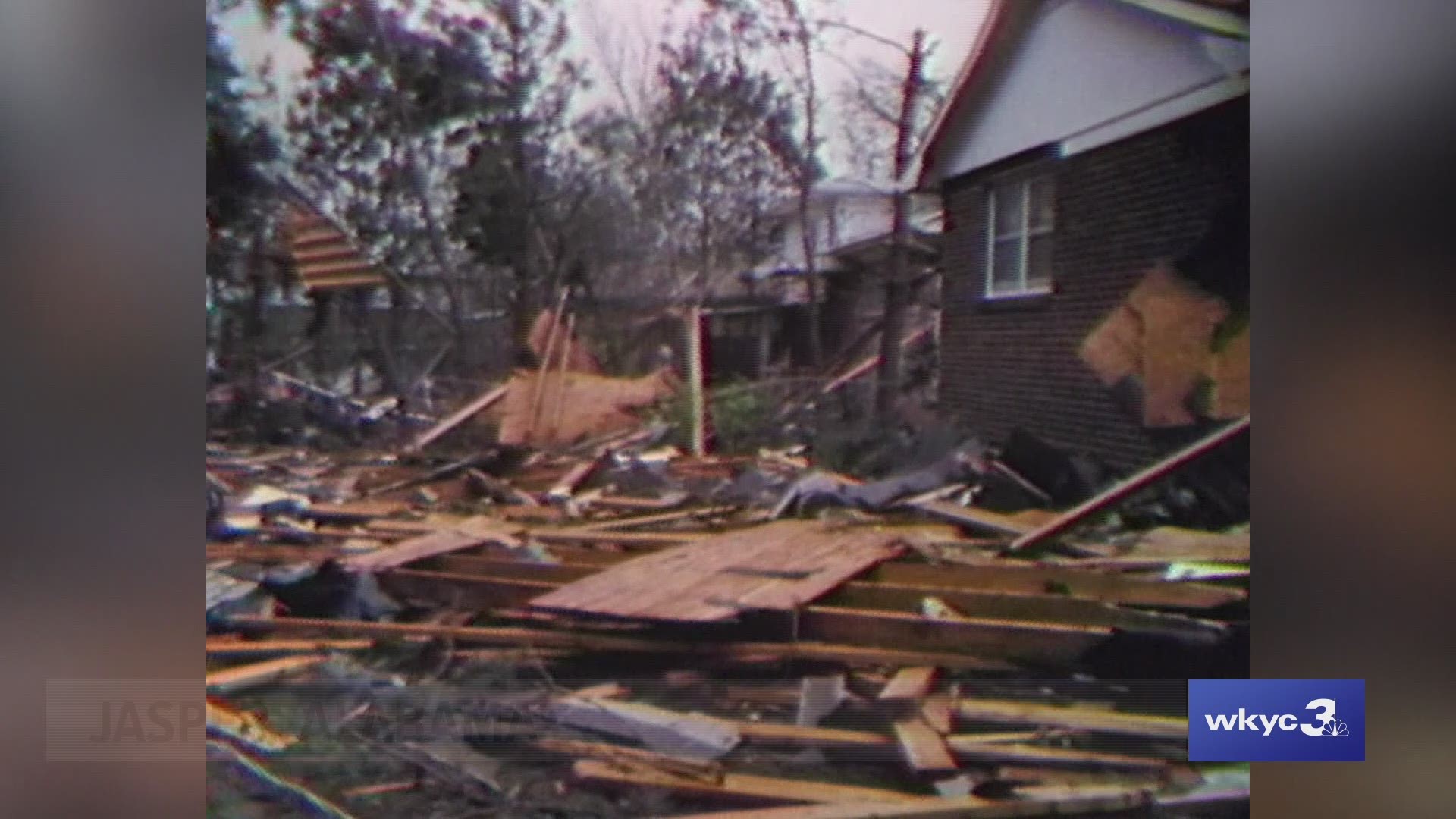CLEVELAND — This particular outbreak was one of the worst in United States history. More than 148 tornadoes touched down in 13 states, including Ohio, killing 330 people, injuring more than 5,000, and creating a damage path of more than 2,500 miles.
One tornado in particular caused significant damage in the city Xenia, OH. The F5 tornado hit in the late afternoon, traveling southwest to northeast across Xenia to Wilberforce.
Along the path of the storm, more than 30 people were killed, more than 1100 were injured, and more than 1000 homes were destroyed. According to the Ohio Historical Society, the storm also struck Wilberforce University and Central State University, shattering windows and destroying many campus buildings.
This horrific tornado event still resonates in the minds of Xenia citizens. On the third day of every month tornado sirens are tested across the city. Every year the city hold events commemorating the storm.
Super Tornado Outbreak Weather
Forecasters became aware of the potential for a severe weather outbreak a couple of days before the storms developed. April 1, 1973, the National Weather Service issued 11 severe weather watches where 20 tornadoes eventually occurred across Mississippi and Alabama through central states of Indiana and Ohio.
On April 2, the National Severe Storms Forecast Center determined that the developing storm system from April 1st, had the potential to produce more severe weather on April 3rd. When storms did fire, they stretched from the Gulf of Mexico to the Mississippi River.
One of the difficulties facing the local Wilmington, OH National Weather Service office, the entity responsible for issuing warnings for Xenia, was that during the outbreak, Doppler radar was not available for them to use. It was not widely available at other weather forecast offices as well.
This technology would have allow forecasters to see storms in more detail, potentially leading to earlier tornado warnings during the outbreak.
At the time, with its current radar technology, the National Weather Service forecasters could see only green blobs on their radar scopes and had to wait for visual confirmation of the tornado before issuing a tornado warning. This unfortunately led to less warning time for people and potentially loss of life.
Since the events of the Xenia tornado and others across the country, investments made into the National Weather Service and technological advances have allowed improved warning time, around 11 minutes.

